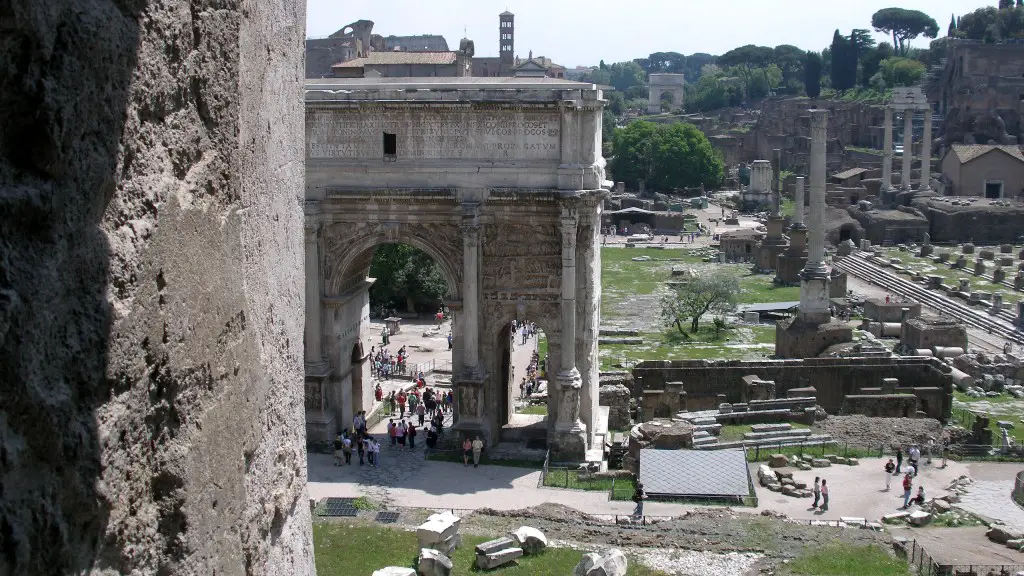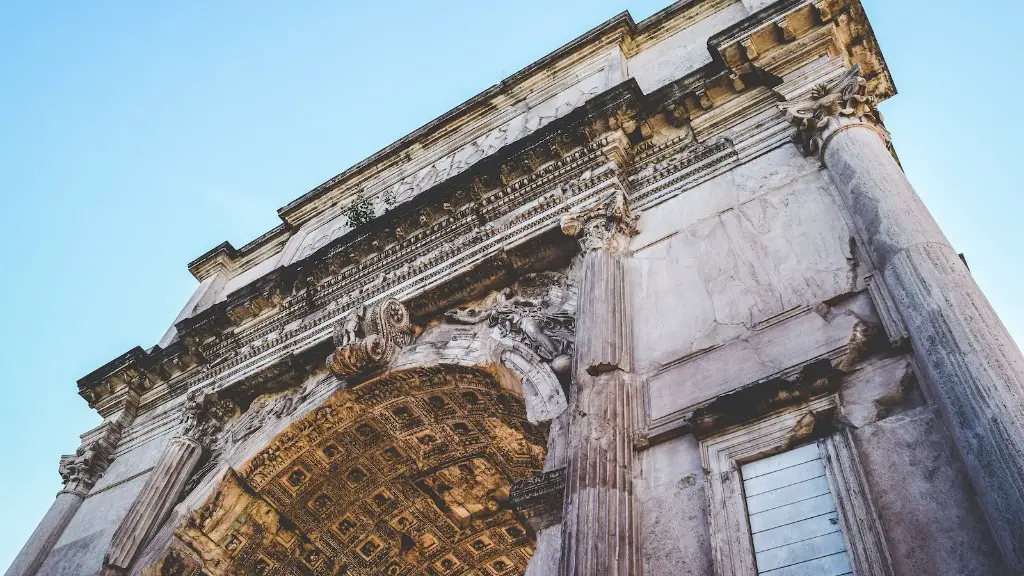In Ancient Rome, the system of money was an integral part of the daily lives of the citizens. The money used then was called denarii, a type of silver coin. This money was initially used for commercial transactions and bartering, and later for taxation and public works. Denarii was used for centuries, and became a primary form of currency in the late Republic and early Empire. The denarius was divided into smaller denominations such as asses, sesterces, septunx, quadrans, and uncia. These coins were commonly used for smaller purchases, and rarely for large ones.
At the start of the Empire, the coins were made out of an alloy of silver and copper, and were differentiated by their weight and size. The denarius, which was the largest and heaviest, was made out of solid silver. The coins were customary to represent a certain amount of goods or services that would be exchanged on payment, and it was common practice to weigh them out in specific quantities.
Over time, the denarii were also used to tokenize goods and services, as mentioned by Tacitus, who stated in his works “Further, that all these should be done for a certain sum of money, gold or silver, according to the nature of the contract.” This was similar to what occurs with paper form of currency today, where goods and services are exchanged for either the coin or the paper, and the coin is tokenized. Furthermore, denarii was used to present gifts, to settle debts, pay rent, buy food, and buy merchandise.
The coins themselves were carefully crafted and inscribed with the name and face of the Caeser, there was an unmistakable mark of his power upon every coin. Likewise, these coins also had marks stamped on them in order to signify the value of that particular coin. For example, a denarius featuring the face of Caesar Augustus had the letters AUG inscribed in order to present his reign.
The denarii that were issued during the Roman Empire’s longest reigns had the most recognition and legitimacy, with coins such as those featuring Julius Caesar, Nero, and Vespasian deemed as the most valuable. By the 2nd century CE, many other coins also became part of circulation. Some of these were made out of bronze and brass, and were minted by local towns and minor kings as payment for services and goods rendered. This period in Roman history is notable for the introduction of coins meant for extra-territorial use, such as the aureus and the denarius from Antioch.
Eventually, by the 4th century CE, the system of money had changed due to a number of factors, including inflation. The denarii, which had at one point been the focus of a state’s wealth, had become devalued. As a result, the coins issued by local authorities became the main form of currency. This period saw the emergence of the follis and the sesterce, the latter of which eventually evolved into the modern day euro.
The Gold Coins of Ancient Rome
Gold coins were also used in Ancient Rome, though they were far less common than the silver coins. The gold coins of this period were called aurei and were only produced as honorific coins. These were usually issued during special occasions, such as military victories and coronations, as well as to mark the appointment of important officials.
Aurei were minted in small numbers and were of an exceptional quality. They were made from a pure gold and bore the portrait of the issuing emperor. These coins were heavy and gave the recipient a sense of special prestige. The aurei were rarely used for everyday transactions and were mostly given as gifts. This practice meant that the aurei never became the currency of everyday commerce and remained as a symbol of authority.
The Roman Tax System
The denarii was a crucial part of the Roman tax system. The tax system was complex and hierarchical, and the amount of money that was collected varied depending on the rank and financial situation of the taxpayer. Taxes were mostly collected as denarii and were used to fund public works, such as building maintenance and road repairs, as well as to pay for military expenditure.
Denarii was also used to pay for soldiers, as well as to pay for food and other supplies for the legions. As the Roman Empire grew, so did the amount of taxation. In order to effectively collect taxes, the empire divided its provinces into provinces and districts, and appointed governors to oversee each one.
Growth of the Money System
As the money system in Ancient Rome grew, so did the importance of coins. Coins were used to indicate status, to represent an individual’s wealth and rank, and to suggest a certain level of sophistication and prestige. They were also used to describe artistic achievements and religious significance.
Coins took on a special meaning in Ancient Rome, and each coin bore the portrait of a ruling family member or a religious figure. Coins were also used to represent certain political and religious ideologies, such as the association of Mark Antony with Cleopatra, or the worship of Emperor Constantine and later Theodosius I and II. This reverence for coins ensured that it was a widely accepted and widely used form of currency.
The Denarius and the Economy
The denarius played a pivotal role in the Ancient Roman economy. It was a widely recognized currency and was used in many different types of transactions. This currency was accepted across the empire, and enabled merchants and traders to conduct business with a degree of confidence.
The denarius enabled trade between provinces, and was used to purchase not only material goods, but also services. This was a crucial part of the Roman economy and enabled economic stability in the provinces. It was also used to pay for public works and government-sponsored events, making it a vital part of the Ancient Roman economy.
The Decline of the Denarius
The denarius was gradually replaced by other coins, as the Roman Empire was gradually weakened by military campaigns and economic mismanagement. Inflation caused a devaluation of currency, leading to the emergence of coins made from bronze and brass. This influx of coins caused a decrease in the value of the denarius, and eventually, it became a worthless piece of metal.
Despite its devaluation, the denarius remained an influential factor in the Roman Empire. It was a symbol of authority and a link between the past, present, and future. It was a representation of the power of the Empire and acted as a reminder of the significance of money in the ancient world.
The Influence of the Denarius Today
The denarius is still an influential aspect of contemporary monetary systems. It was one of the earliest forms of coin, and is still present in various currencies today, such as the euro, which is based on the denarius. Additionally, the words “Denarius” and “Dollar” have the same Latin root, illustrating the historical significance of the denarius in the Western world.
The system of money in Ancient Rome was a complex one, and its influence can still be seen today. The denarius represents an important part of this system, and its significance should not be forgotten. Its role in the Ancient Roman economy is a reminder of the importance of money in our world today.




